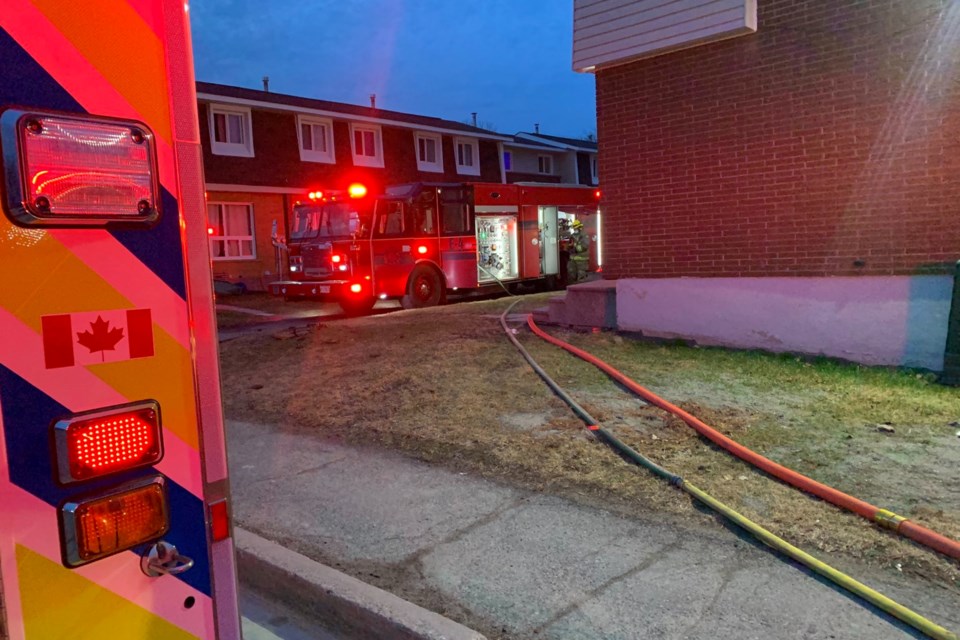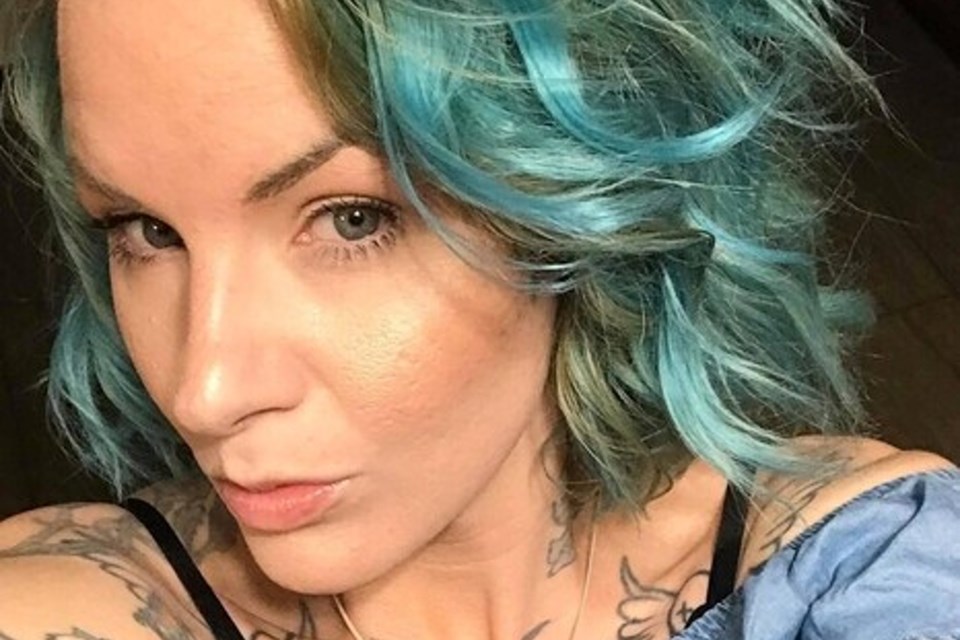Joseph Wilkinson, defence lawyer for a man on trial for his alleged role in a 2021 arson and triple homicide, began his closing submissions in an unusual way, inviting the jury to find his client, Liam Stinson guilty.
However, not guilty of the three counts of first-degree murder, which Stinson is charged with, but of the lesser manslaughter and arson.
The Crown, in their submissions, begs to differ with the defence’s interpretation of events.
For the jury, it will come down to whether they believed Stinson planned to kill before telling two people, known in Sudbury.com’s coverage as Witness 1 and Witness 2, to start an April 11, 2021, fire in exchange for drugs, or, did he simply “encourage” them to set the fire, without those involved knowing anyone was home when they fire-bombed a Bruce Avenue townhouse that night.
Beginning his closing submissions after the Crown, Wilkinson began with a simple statement:
“Mr. Stinson concedes the setting of the fire or arson was an unlawful act,” Wilkinson told the jury. “Mr. Stinson concedes the fire caused the deaths of Miss (Jasmine) Somers, Miss (Jamie-Lynn) Rose and Mr. (Guy “Popcorn”) Henri and caused harm to Mr. Cheff.”
Wilkinson said Stinson admits he was a party to the arson, and that he concedes “he uttered words of encouragement to (two people) to light the fire.”
But that’s the end of it, according to the defence.
First-degree murder is the planned and deliberate death of another person. Second-degree murder is murder that is not planned, but is deliberate. Manslaughter is the death of another person that is neither planned nor deliberate, but results from the actions of the accused.
Murder comes with an automatic life sentence, 25 years. But for second-degree murder, parole can be granted after a period set by the judge during sentencing. Manslaughter has no minimum sentence, unless it was committed with a firearm, and could result in significantly less jail time for Stinson.
Both Crown and defence counsel laid out their arguments in a Powerpoint presentation for the jury.
Defence’s case
Wilkinson gave five reasons why Stinson should not be found guilty of first or second-degree murder, He said the arson was “a stupid mistake borne of intoxication and clouded judgment with no appreciation for the consequences.”
Wilkison offered the jury five reasons to set aside the murder convictions:
- No evidence of a motive to harm or kill anyone (staying at Cheff’s home).
- Evidence of Stinson’s intoxication (both alcohol and crack-cocaine) demonstrates Stinson had neither “intention for murder and did not plan and deliberate a murder”
- In the defence’s opinion, “the evidence does not show Stinson knew or believed anyone was in Cheff’s residence at the time of the fire.
- The two men who set the fire did not intend to harm or kill anyone; and
- Stinson’s actions and words after the fire “show he did not intend to kill or harm anyone.”
Wilkinson said the Crown’s drug debt theory of the case “does not stack up,” and that the texts between Stinson and Henri on April 10, the day before the arson, regarding drugs that Rose was to bring to Henri, did not prove that theory.
“It makes no sense for Mr. Stinson to kill Mr. Cheff or Mr Henri over this amount of drug,” he said. “They were frequent customers. It was a small debt Mr. Stinson owed to Mr. Henri, not the other way around. A drug deal gone sideways is not the reason for the deaths of Miss Somers, Miss Rose and Mr. Henri.”
Wilkinson also stated that Stinson’s level of intoxication made it impossible for him to truly understand the gravity of what he was asking Witness 1 and Witness 2 to do.
“What Mr. Stinson did was irrational and the product of clouded judgment,” said the lawyer.
Wilkinson added that Cheff had planned to visit Timmins the weekend of the fire and Rose was also looking to go there. Stinson was likely aware of that plan, but when Cheff cancelled the trip, Stinson may not have known of the change of plans.
As for the arson plan, Wilkinson said Stinson “only wanted to send a message.” The two men who set the fire using Molotov cocktails testified they did not know anyone was home and took some measure to confirm this. Wilkinsons also noted that Witness 2 testified they threw one Molotov cocktail below a smoke detector.
Crown’s theory
Crown attorney Kaely Whillans told the jury that Stinson knew there were people in the home he sent two men to set fire to, “he just didn’t care.”
“There was no reason to burn down Mr. Cheff’s home,” she said. “There was only one reason and that was Jamie … He knew that Mr. Cheff and Mr. Henri were home and he just didn’t care.”
Whillans said Stinson could manipulate two people with drug addictions to carry out his plan. “He didn’t care who had to be taken down in his attempt to get rid of her (Rose.)”
Stinson’s estranged relationship with Rose has been described by witnesses as “toxic” and “aggressive.” Rose’s mother, Christine Wright, testified that Stinson had threatened to kill Wright and her husband and their family. Whillans said Stinson had a history of manipulating Rose, and she had moved in and out of his home several times, but the final straw was that in the days leading up to the fire, Rose had stolen drugs from him.
Whillans told the jury the fire was “exactly as he planned, exactly as he directed … He intended, planned and directed the murder of the three victims at 744 Bruce Ave.”
As for his level of intoxication, Whillans replayed footage seen by the jury of Stinson after the fire was set. The footage, surveillance video from a convenience store and a local hotel he visited after the fire, is proof, said Whillans, that his intoxication was not severe.
“He walks away in a surefooted manner, not agitated, not paranoid, but aware of his surroundings,” she said. “He’s controlled. He’s calculated.”
Whillans told the jury Stinson lied when one of the men, Witness 1, asked if anybody would be home when the fire was to be set. Stinson told them no one was home.
“(The man who asked) knew that if there were people in there, they would get hurt, they would get killed,” she said. “You take Mr. Stinson’s lies out of the equation, you take Mr. Stinson out of the equation, Miss Rose, Miss Somers and Mr. Henri would still be alive today.”
Whllans also said that Stnson began to worry, and attempted to conceal his involvement by sending texts to people he knew were dead, among others. This was in response, she said, to the arrival of Witness 1 at the hotel, demanding the drugs he testified he was promised for carrying out Stinson’s plan.
“Asking drug addicts to set a fire knowing it will kill people is risky,” she said. “They are not discreet. They set the fire and they want their drugs, He had not accounted for that in his manipulation.”
Stinson was arrested on April 20, 2021, and remains in custody.
The jury will next hear the final charge from Justice R. Dan Cornell, who will instruct the jury on the law, and help them understand the evidence they’ve heard. Cornell will also whittle the jury down to 12 from 14. As all 12 official jury members lasted the length of the case, the two alternates will be dismissed.
After the charge, the jury will be sequestered for the length of their deliberation.
Jenny Lamothe is a reporter with Sudbury.com.

